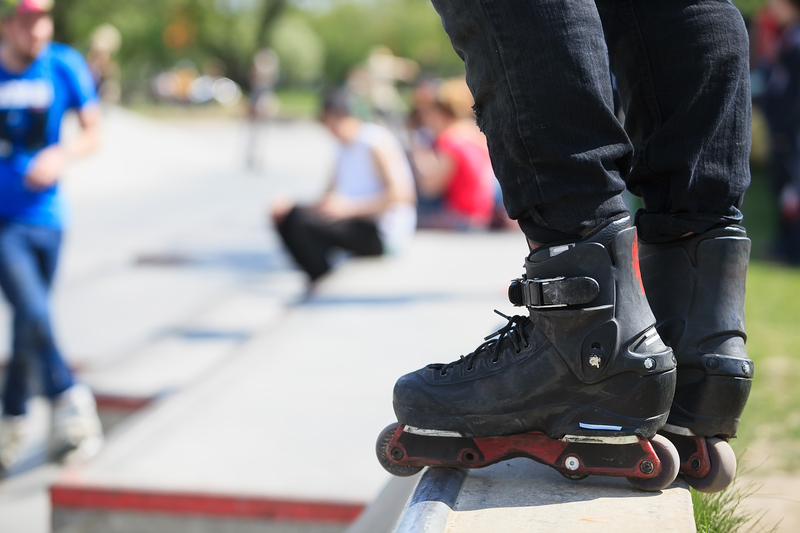Prepare to Move: Declutter for a Seamless Transition
Moving to a new home is a significant event, often signaling the start of an exciting new chapter. However, transitioning smoothly requires careful preparation, and one of the most effective ways to ensure a stress-free relocation is by decluttering before your move. Not only does this process lighten your load, but it also makes unpacking and setting up your new space easier and more enjoyable. In this comprehensive guide, you'll discover actionable tips, expert strategies, and insightful advice to help prepare to move efficiently by decluttering for a seamless transition.

Why Decluttering is Essential Before Relocating
When you prepare to move, it's tempting to just pack everything and sort it out later. However, this approach often leads to cluttered spaces, higher moving costs, and more stress. Here are some compelling reasons to declutter for an effortless move:
- Cost savings: Moving companies charge based on volume and weight. Fewer items mean lower moving costs.
- Efficiency: Packing and unpacking are quicker, saving you time and energy.
- Organization: Starting fresh in your new home without excess possessions helps you stay organized.
- Mental clarity: Letting go of unnecessary belongings lifts a mental burden, making the transition smoother.
- Increased value: You may discover treasures to sell or donate, giving your items a second life and possibly earning extra cash.
When Should You Start Decluttering?
Timing is everything when it comes to preparing for a move. Ideally, it's best to start decluttering as soon as you know you'll be relocating. This gives you ample time to sort, organize, and decide which possessions will make the move with you. According to professional organizers, beginning the decluttering process at least 4-6 weeks before your move leads to the best results.
Step-by-Step Decluttering for a Seamless Transition
Follow these strategic steps to ensure you're decluttering for a smooth moving experience:
1. Set Clear Goals and a Timeline
- Make a checklist of spaces to declutter (bedroom, kitchen, garage, etc.).
- Set deadlines for completing each area to stay on track.
- Enlist help from family or friends for larger or shared spaces.
2. Gather Your Supplies
- Cardboard boxes or bins for sorting
- Markers and labels
- Trash bags and donation bags
- Cleaning supplies
*Being prepared prevents distractions during the decluttering process.
3. Tackle One Area at a Time
- Start small, such as drawers or a single closet, to build momentum.
- Gradually move to larger rooms after positive progress.
4. Use the Four-Box Method
For systematic sorting, use four labeled boxes:
- Keep: To take to the new home
- Donate/Sell: To give away or sell
- Trash: Broken or unusable items
- Unsure: For items needing further consideration
5. Be Ruthless--But Realistic
- Ask yourself: Have I used this in the last 12 months?
- If not, consider letting it go.
- Keep sentimental items to a minimum, and prioritize practicality and utility.
6. Dispose, Donate, or Sell Responsibly
- Recycle where possible to reduce waste.
- Host a garage sale or use online marketplaces for unwanted but valuable items.
- Donate gently-used goods to local charities or shelters.
- Arrange for bulk waste pickup for large items you can't transport or donate.
Room-by-Room Decluttering Checklist
For an orderly move, break down the process by room. Here's a detailed checklist to help you declutter efficiently before moving:
Bedroom
- Sort clothing by season; donate or sell unneeded pieces.
- Discard broken hangers and unused accessories.
- Limit sentimental items to a keepsake box.
- Test linens, tossing worn or mismatched sets.
Kitchen
- Clear out expired or unused food.
- Review cookware; keep versatile, high-quality items.
- Eliminate duplicate utensils, gadgets, and dishware.
- Donate unopened non-perishables to food banks.
Living Room
- Minimize decor; keep only favorite or functional pieces.
- Recycle old magazines, newspapers, and books.
- Check electronics; sell or responsibly recycle outdated items.
- Organize cables, remote controls, and media.
Bathroom
- Throw away expired toiletries and medications.
- Retain only daily-use products.
- Sort towels and throw away old or stained items.
Garage & Storage
- Group items by function (tools, sports gear, etc.).
- Dispose of unused paint, chemicals, or broken equipment safely.
- Donate or sell outgrown bikes, toys, and hobby supplies.
Tips to Stay Motivated While Decluttering for a Move
- Visualize your new home: Picture a tidy, organized space.
- Set mini-goals: Reward yourself for completing each area.
- Document progress: Take before-and-after photos for inspiration.
- Play music or listen to podcasts: Make the process more enjoyable.
- Involve the whole family and delegate age-appropriate tasks.
Common Mistakes to Avoid When Preparing to Move by Decluttering
- Leaving all decluttering until the last minute
- Underestimating the volume of "just-in-case" items
- Not labeling boxes - making unpacking harder
- Getting sidetracked by nostalgia while sorting
- Neglecting to properly dispose of hazardous materials
Eco-Conscious Decluttering: Sustainable Moving Tips
Moving creates significant waste if not managed carefully. Consider these sustainable decluttering tips as you prepare to move:
- Choose re-usable packing materials--rent plastic bins or use suitcases.
- Break down cardboard and recycle moving boxes post-move.
- Donate electronics to certified recycling programs.
- Use towels and linens to wrap fragile items instead of bubble wrap.
- Compost old papers, food, or yard waste where possible.
What to Do with Items You Can't Take with You
Some items may be too large, unnecessary, or not allowed in your new home. Here's how to handle them:
Appliances and Furniture
- Sell valuable pieces to offset moving expenses.
- Arrange pickup or donation with local charities.
- Contact waste management for bulk disposal services.
Hazardous Materials
- Consult your city's disposal guidelines.
- Return unused paint or chemicals to hardware stores (if accepted).
- Never pack flammable, corrosive, or toxic substances for professional movers.
How to Decide What to Keep When Preparing to Move
- Ask if it fits your future lifestyle: Will it suit your new space or needs?
- Evaluate sentimental items: Capture memories digitally if you need to downsize physical keepsakes.
- Consider cost vs. replacement: For high-value or rare items, it may be worth moving them. Otherwise, replace them after settling in.
- Think long-term: If you're unsure, err on the side of simplicity.
Professional Support: When to Hire Help
If organizing and purging feels overwhelming, consider enlisting the help of a professional organizer or moving company that offers decluttering services. They can:
- Provide objective advice on what to keep vs. discard
- Streamline packing and organization
- Arrange for donation pickup or disposal
- Reduce the emotional burden of downsizing

Pre-Move Decluttering: The Key to an Effortless Move
A streamlined transition isn't just about packing boxes--it's about transforming your living space and mindset before a move. By systematically decluttering your home before relocation, you prepare for a fresh start, save time and money, and set yourself up for success in your new environment. Remember, every item you let go of creates more space--physically and emotionally--for exciting new opportunities.
In summary: To prepare for a move and declutter for a seamless transition, start early, tackle one area at a time, use the four-box method, donate or sell unused items, and be realistic about what to keep. Stay motivated by visualizing the benefits, and, if needed, reach out for professional help to ensure a smooth experience. Your move will be simpler, faster, and far more enjoyable--and your new home will thank you!
Conclusion: Your Moving Journey Begins with Decluttering
As you embark on this noteworthy life change, take the time to prepare to move by decluttering for a seamless transition. This proactive step is the most impactful way to guarantee your relocation is not only organized and cost-effective, but also the start of a lighter, brighter new chapter.



